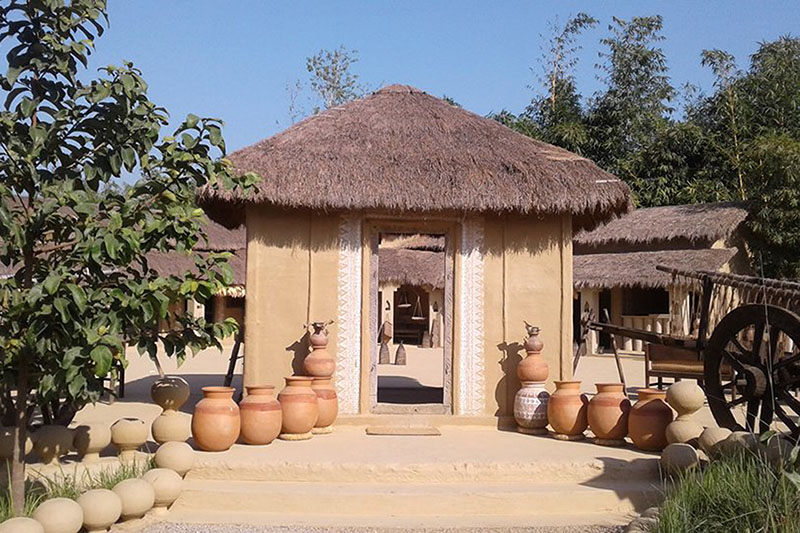Traditional Tharu houses on verge of disappearing
Kanchanpur, March 4
The beautiful and artistic traditional houses of the Tharu people made of wood and thatch are disappearing these days.
This situation has arisen as people of this indigenous community are abandoning the traditional architectural style for the ‘modern’ cement and concrete houses.
The shortage of timber, tiles, the ‘khariya’ grass and the alluvial mud found in ponds, which are used for building traditional Tharu houses is another reason for the disappearance of these houses, Narendra Prasad Chaudhari said.
He said, “Tharus have also started opting for brick and cement ‘modern’ type of houses as their economic status improves. They are beginning to build modern houses as the cost of building traditional houses is almost equal,” he explained.
According to him, people from the community could bring timber from the forest for free and without having to go through all the administrative hassles. They also need not pay for the mud and the ‘khariya’ grass used for building houses before. But the situation has changed now after the forests were turned into community forest as all forest-based construction materials have to be purchased. This has shot up the construction cost. Similarly, the factories manufacturing the traditional mud tiles and other items have closed down.
Moreover, the Tharu people living in the vicinity of towns and cities have started building ‘modern’ cement and brick houses. Those in the rural areas have also have started emulating their brethren living in towns and building cement, concrete and brick houses. In a few places, the Tharu people have started the home-stay tourism service and have preserved their traditional houses.
Locally available traditional construction materials, which also include plants such as bareli, charuwa, bariyani, sarbal, kadi, wooden pillars, tiles, and batta are used in the construction of such homes. Windows are adorned with several sorts of clay-made images which are known as mauka in the Tharu language.
An entrance to the house is called priyani while the guest room is dehari, and bahari serves as the kitchen. Kontis or bedrooms are constructed scientifically. Dehari does have two doors/exits for smooth air passage and they are used as emergency exit during possible fire or other sorts of crisis. Such houses have earthquake resistance features as well, said a local, Asharam Chaudhari.
House walls made of khariya dried plants are durable as cemented walls as Tharu women daub such walls regularly in four different ways. It takes from 17 to 25 days to construct a traditional home. There was a system of exchange of a voluntary labour to construct houses. But, this culture is changing due to the changed time. Now people are busy with their own affairs and have no time to go for such practice. In this context, anyone wishing to build such shelter needs to hire workers and construction becomes costlier due to paid wages and that’s why the Tharu people have shifted their priority to concrete homes.






